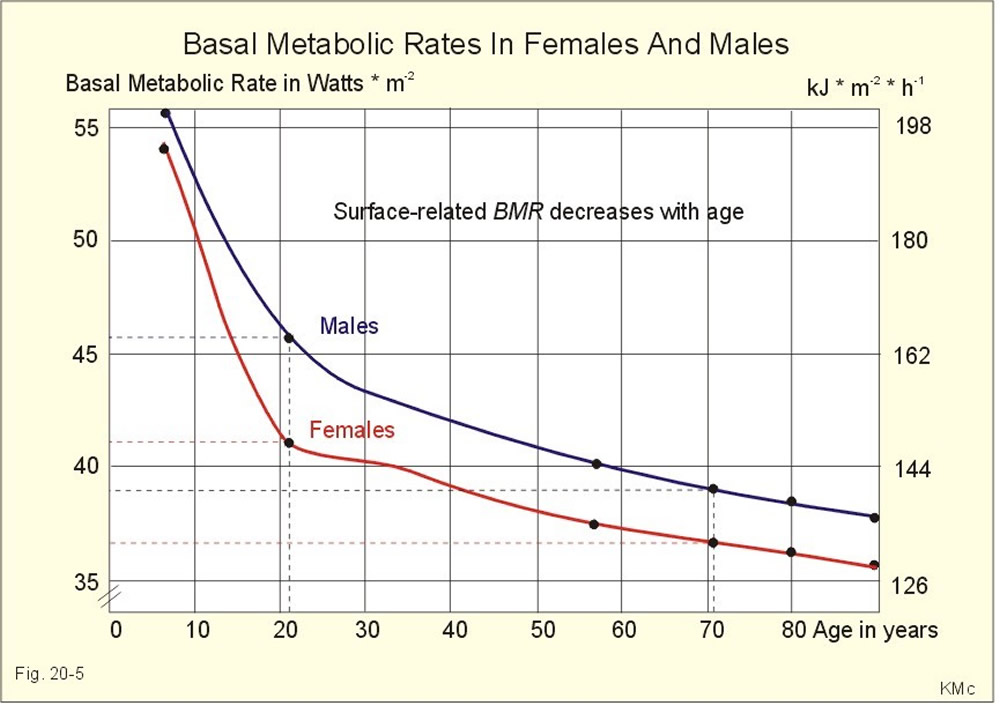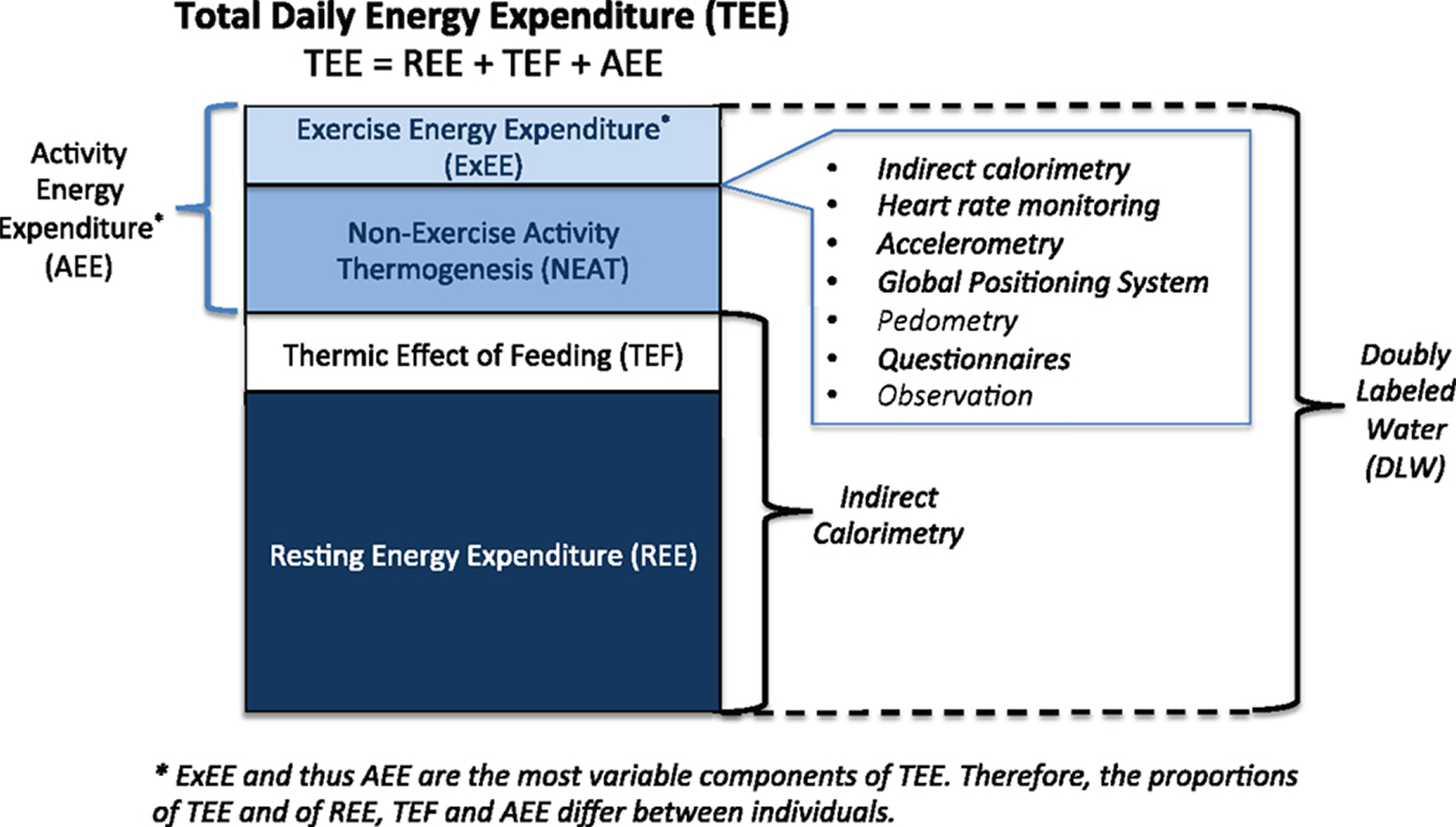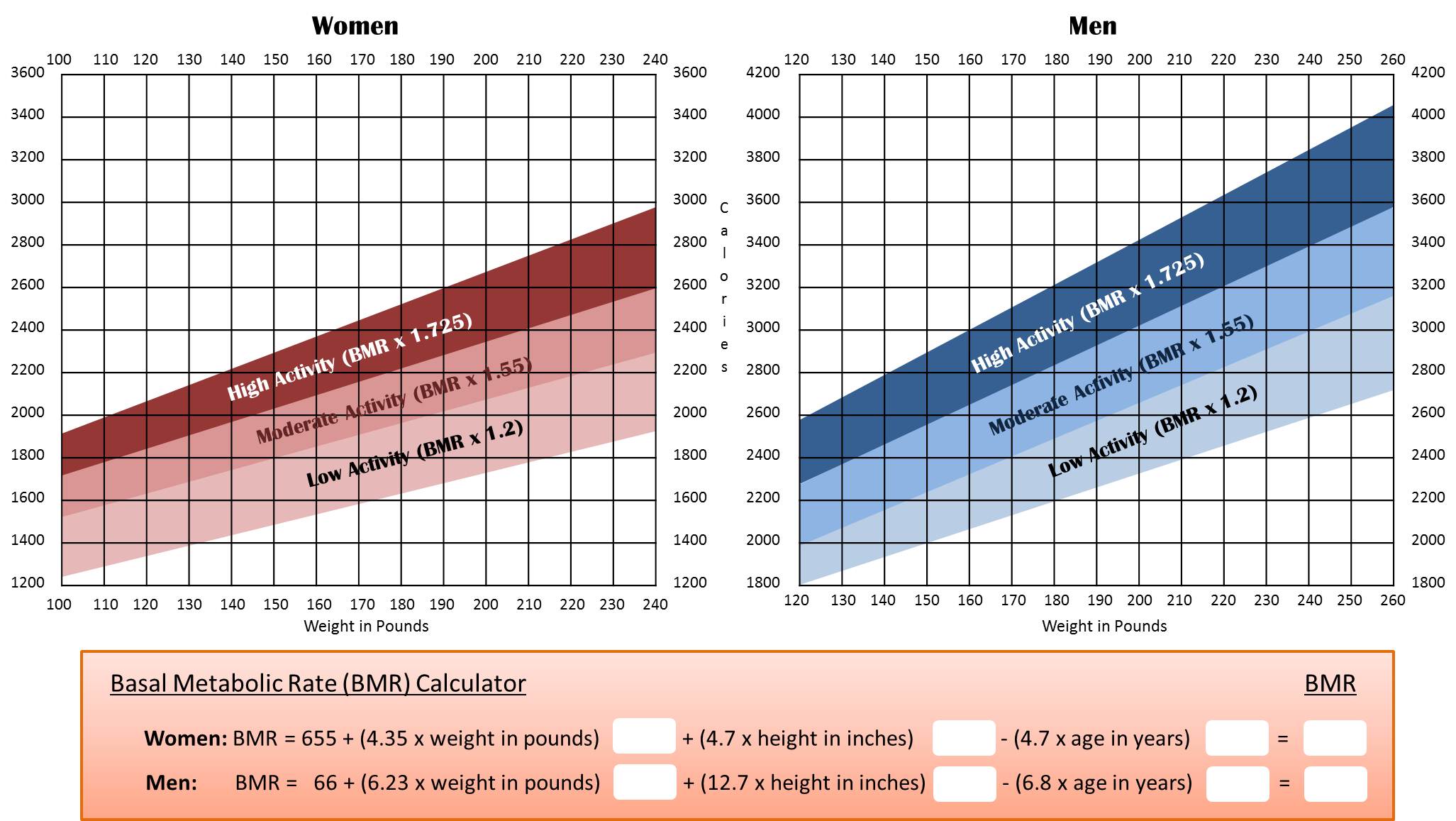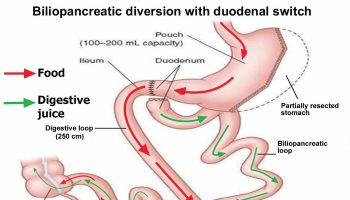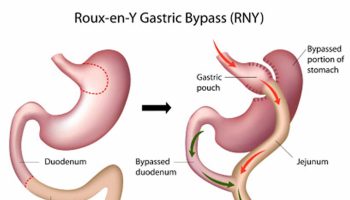Contents
How To Boost Your Metabolism
What is metabolism ? Metabolism is the sum of the chemical reactions that take place within each cell of your body that provide energy for vital processes in order to maintain life. It is the process by which your bodies combine nutrients with oxygen to produce the energy your body needs in order to maintain normal bodily functions. This energy is measured in calories and calories are considered fuel to your bodies.
Daily total energy expenditure (TEE) is the net amount of energy utilized by animals and humans to maintain core physiological functions and to allow locomotion 1. Three main components of energy balance determine total energy expenditure:
- Resting Energy Expenditure (REE) or Resting Metabolic Rate (RMR) or Basal metabolic rate (BMR),
- the Thermic Effect of Food (TEF), which is also called diet induced thermogenesis. The Thermic Effect of Food (TEF) represents approximately 8–15% of total daily energy expenditure (TEE) 2 and
- the energy expended for physical activity 3.
In this study 4 comparing the thermic effect of food responsiveness in habitually exercising and sedentary healthy adult humans found greater Thermic Effect of Food (TEF) in habitual exercisers than sedentary healthy adult humans. Thermic Effect of Food (TEF) is believed to be mediated in part by sympathetic nervous system activation and consequent beta-adrenergic receptor (beta-AR) stimulation of metabolism. The greater Thermic Effect of Food (TEF) in habitual exercisers is attributable in part to their augmented beta-AR thermogenic responsiveness. The study results also suggest that peripheral thermogenic responsiveness to beta-adrenergic receptor (beta-AR) stimulation is a physiological determinant of TEF and hence energy balance in healthy adult humans 4.
Additional components may exist (i.e. energy costs of emotion), but play a minor role with respect to energy balance 5, 6, 7. Multiple factors affect our daily energy needs whereby age, body composition, thyroid hormone status, catecholamine levels, sympathoadrenergic activity, ambient and body temperature, disease states and drug treatment regimens are among the most important determinants 3.
The largest component of total daily energy expenditure (TEE), at least among individuals not involved in extremely high volumes of exercise, is resting energy expenditure (REE), which is often mentioned interchangeably with resting metabolic rate (RMR) or basal metabolic rate (BMR). Basal metabolic rate is the energetic cost of the biological processes required for survival at rest. As a matter of technical trivia, it is not uncommon that the term resting energy expenditure (REE) is synonymously interchanged with with resting metabolic rate (RMR) or basal metabolic rate (BMR). However, the basal metabolic rate (BMR) is measured in an overnight fasted state, lying supine at complete rest, in the postabsorptive state (the condition in which the gastrointestinal tract is empty of nutrients and body stores must supply required energy) 3. By contrast, resting energy expenditure (REE) or resting metabolic rate (RMR) represents fasted-state energy expenditure at rest at any time of the day and can range 3–10% higher than BMR due to the residual influence of TEF and physical activity 8.
Basal metabolic rate typically amounts to 60–70% of total daily energy expenditure (TEE). The other main component of total daily energy expenditure (TEE) is non-resting energy expenditure, which is comprised of 3 sub-components: non-exercise activity thermogenesis (NEAT), exercise activity thermogenesis (ExEE), and finally, the Thermic Effect of Food (TEF). The non-exercise activity thermogenesis (NEAT) encompasses the energy expenditure of occupation, leisure, basic activities of daily living, and unconscious/spontaneous activity such as fidgeting. While Resting Metabolic Rate (RMR) and Thermic Effect of Food (TEF) are relatively static, non-exercise activity thermogenesis (NEAT) and exercise activity thermogenesis (ExEE) vary widely within and across individuals. Exercise activity thermogenesis (ExEE) has been reported to range from 15 to 30% of total daily energy expenditure (TEE) 9, but the role of non-exercise activity thermogenesis (NEAT) is more easily overlooked. Non-exercise activity thermogenesis (NEAT) comprises ~15% of total daily energy expenditure (TEE) in sedentary individuals and perhaps 50% or more in highly active individuals 10. The impact of non-exercise activity thermogenesis (NEAT) can be substantial since it can vary by as much as 2000 kcals between individuals of similar size 11. Table 1 ( see below) outlines the components of total daily energy expenditure (TEE), with examples of low, moderate, and high total daily energy expenditure (TEE) 12, 13, 14.
Table 1. Components of total daily energy expenditure
| Component of TEE | Percent of TEE | Example: 1600 kcal TEE | Example: 2600 kcal TEE | Example: 3600 kcal TEE |
|---|---|---|---|---|
| Thermic effect of food (TEF) | 8–15% | 128–240 | 208–390 | 288–540 |
| Exercise activity thermogenesis (ExEE) | 15–30% | 240–480 | 390–780 | 540–1080 |
| Non-exercise activity thermogenesis (NEAT) | 15–50% | 240–800 | 390–1300 | 540–1800 |
| Basal metabolic rate (BMR) or Resting EE (REE) | 60–70% | 960–1120 | 1560–1820 | 2160–2520 |
What is Resting Energy Expenditure (REE) ?
Resting Energy Expenditure (REE) represents the minimal amount of energy expended for homeostatic processes (for the normal functioning of cells and organs), in other word, it’s the minimum amount of energy required by your body just to survive at rest. Resting Energy Expenditure (REE) is essentially a function of lean body mass (LBM), as about 80% of REE is accounted for by this variable within and across species. In free-living individuals the largest component of total daily energy expenditure (TEE), at least among individuals not involved in extremely high volumes of exercise, is the resting energy expenditure (REE), which typically occupies the main percentage ~ 60-70% of your total daily energy expenditure (TEE) (see figure 1).
As a matter of technical trivia, it is not uncommon that the term resting energy expenditure (REE) is synonymously interchanged with with resting metabolic rate (RMR) or basal metabolic rate (BMR). However, the basal metabolic rate (BMR) is measured in an overnight fasted state, lying supine at complete rest, in the postabsorptive state (the condition in which the gastrointestinal tract is empty of nutrients and body stores must supply required energy) 3. By contrast, resting energy expenditure (REE) or resting metabolic rate (RMR) represents fasted-state energy expenditure at rest at any time of the day and can range 3–10% higher than BMR due to the residual influence of TEF and physical activity 8.
The other main component of total daily energy expenditure (TEE) is non-resting energy expenditure, which is comprised of 3 subcomponents:
- Non-exercise activity thermogenesis (NEAT),
- Exercise activity thermogenesis (ExEE), and finally,
- Thermic Effect of Food (TEF).
NEAT encompasses the energy expenditure of occupation, leisure, basic activities of daily living, and unconscious/spontaneous activity such as fidgeting. While BMR and TEF are relatively static, Non-exercise activity thermogenesis (NEAT) and Exercise activity thermogenesis (ExEE) vary widely within and across individuals. Exercise activity thermogenesis (ExEE) has been reported to range from 15 to 30% of total daily energy expenditure (TEE) 9, but the role of non-exercise activity thermogenesis (NEAT) is more easily overlooked. Non-exercise activity thermogenesis (NEAT) comprises ~15% of total daily energy expenditure (TEE) in sedentary individuals and perhaps 50% or more in highly active individuals 10. The impact of non-exercise activity thermogenesis (NEAT) can be substantial since it can vary by as much as 2000 kcals between individuals of similar size 11. Table 1 ( see above) outlines the components of total daily energy expenditure (TEE), with examples of low, moderate, and high total daily energy expenditure (TEE) 12, 13, 14.
The rate at which your body uses up kilojoules (or energy) to carry out these vital metabolism functions is called the metabolic rate:
- Around five to ten per cent of your energy is used to eat, digest and metabolise food.
- Another 20 per cent goes to burning kilojoules during physical activity (if you are a normally-active person).
- The remaining 50–80 per cent is the amount of energy used while you are at rest. This is known as your basal metabolic rate or BMR. The faster your BMR is, the more efficiently your body burns up kilojoules.
Your BMR can be influenced by many factors including your body size, age, gender, genetic predisposition, hormones and what you eat. The amount of exercise you do can have an effect as well.
Table 2. Energy Expenditure of Different Tissues/Organs
| Organ or tissue | Metabolic rate (kcal/kg/day) | % Overall REE | Weight (kg) | % of Total body weight |
|---|---|---|---|---|
| Adipose | 4.5 | 4 | 15 | 21.4 |
| Other (bone, skin, intestine, glands) | 12 | 16 | 23.2 | 33.1 |
| Muscle | 13 | 22 | 28 | 40.0 |
| Liver | 200 | 21 | 1.8 | 2.6 |
| Brain | 240 | 22 | 1.4 | 2.0 |
| Heart | 400 | 9 | 0.3 | 0.5 |
| Kidneys | 400 | 8 | 0.3 | 0.5 |
Note: Muscles, Brain and Liver are the top 3 users of energy at rest.
An awareness of tissue-specific metabolism can be helpful in understanding the resting metabolic benefits of improving body composition. It can also serve to clarify the widely misunderstood and often overestimated contribution of muscle to Resting Energy Expenditure (REE). McClave and Snider 16 reported that the greatest contributors to Resting Energy Expenditure (REE), per unit of mass, are the heart and kidneys, each spending approximately 400 kcal/kg/day. Next in the hierarchy are the brain and the liver, at 240 and 200 kcal/kg/day, respectively. These four organs constitute up to 70–80% of Resting Energy Expenditure (REE). In contrast, muscle and adipose tissue expend 13 and 4.5 kcal/kg/day, respectively. This should debunk the notion that increases in muscle mass give individuals the license to reduce dietary discretion. Even a relatively significant muscular gain of 5 kg would increase Resting Energy Expenditure (REE) by only ~65 kcal/day. However, on a net basis (accounting for the total mass of each tissue in the body), muscle, brain, and liver are the top-3 contributors to overall Resting Energy Expenditure (REE). Thus, substantial losses in lean muscle mass – including muscle – can meaningfully impact Resting Energy Expenditure (REE).
Figure 1. Model of human energy expenditure compartments 17. Exercise related activity (e.g. jogging, walking, cycling, weight lifting) is exercise energy expenditure (ExEE), while spontaneous physical activity relates to nonexercise activity thermogenesis (NEAT) (e.g. maintenance of posture and other physical activities of daily life). Note that parts of spontaneous physical activity are beyond voluntary control, i.e. “fidgeting”.
Rather than slow metabolism, factors more likely to contribute to weight gain include:
- Eating too many calories > if you eat and drink more kilojoules than we need for your metabolism and exercise, you store it mostly as fat.
- Getting too little physical activity (sedentary lifestyle)
- Genetics and family history
- Certain medications
- Unhealthy habits, such as routinely not getting enough sleep
- Aging
- Starvation and Dieting
- Being female.
If you’re concerned about slow metabolism and your weight, talk to your doctor about healthy changes you can make. And if you still think you have slow metabolism, your doctor can check your metabolism or check for rare conditions that can cause problems with metabolism and weight, such as hypothyroidism and Cushing’s syndrome.
Influences on Basal Metabolic Rate
Your basal metabolic rate is influenced by multiple factors working in combination, including:
- Body size – larger adult bodies have more metabolising tissue and a larger BMR
- Amount of lean muscle tissue – muscle burns kilojoules rapidly
- Amount of body fat – fat cells are ‘sluggish’ and burn far fewer kilojoules than most other tissues and organs of the body
- Crash dieting, fad diets – eating too few kilojoules encourages the body to slow the metabolism to conserve energy. BMR can drop by up to 15 per cent. Loss of lean muscle tissue further reduces BMR
- Age – metabolism slows with age due to loss of muscle tissue, but also due to hormonal and neurological changes
- Growth – infants and children have higher energy demands per unit of body weight due to the energy demands of growth and the extra energy needed to maintain their body temperature
- Gender – generally, men have faster metabolisms than women because they tend to be larger
- Genetic predisposition – your metabolic rate may be partly decided by your genes
- Hormonal and nervous controls – BMR is controlled by the nervous and hormonal systems. Hormonal imbalances can influence how quickly or slowly the body burns kilojoules
- Environmental temperature – if temperature is very low or very high, the body has to work harder to maintain its normal body temperature, which increases the BMR
- Infection or illness – BMR increases because the body has to work harder to build new tissues and to create an immune response
- Amount of physical activity – hard-working muscles need plenty of energy to burn. Regular exercise increases muscle mass and teaches the body to burn kilojoules at a faster rate, even when at rest
- Drugs – some drugs, like caffeine or nicotine, can increase the BMR
- Dietary deficiencies – for example, a diet low in iodine reduces thyroid function and slows the metabolism.
Boosting metabolism is believed by some people to be the holy grail of weight loss. However, trying to boost your metabolism probably won’t lead to weight loss, at least not to the degree that changing your diet and lifestyle habits will. Only rarely is excessive weight gain caused by a medical problem that slows metabolism, such as Cushing’s syndrome or an underactive thyroid gland (hypothyroidism).
Is it possible to be overweight because of a slow metabolism ?
There is such a thing as a slow metabolism. But slow metabolism is rare, and it’s usually not what’s behind being overweight or obese — that’s ultimately a result of interactions among genetics, diet, physical activity and other factors 18. Currently, there is no hard evidence except for a theory called “adaptive thermogenesis” 15. Joosen and Westerterp 19 examined the literature (11 studies) to see if “adaptive thermogenesis” existed in overeating experiments. No evidence beyond the theoretical costs of increased body size and thermic effect of food were found. Nevertheless, there is substantial interindividual variability in the energetic response to overfeeding. They found in overfeeding experiments, weight gain is often less than expected from the energy excess intake. In part this is the result of an obligatory increase in energy expenditure associated with the increased body weight and fat-free mass 20 and the larger amount of food to be digested and absorbed 21. In addition, some individuals appear to be resistant to weight/fat gain, showing a concurrent increase in resting energy expenditure alongside increased food intake. Others show less homeostatic drive and greater efficiency of energy storage. This inter-individual variability is due, at least in part, to differences in non-exercise activity thermogenesis (NEAT) 15. They also found that the nonexercise activity thermogenesis (NEAT) which is associated with fidgeting, maintenance of posture and other physical activities of daily life, is the most variable component of total energy expenditure between persons 22 and thus is most likely the main contributor to variation in weight gain during overeating. Indeed, several overfeeding experiments show that those subjects with the largest increase or decrease in nonexercise activity thermogenesis (NEAT) have respectively the lowest and highest weight gains 23, 24. But relatively large changes in nonexercise activity thermogenesis (NEAT) (as percentage of total daily energy expenditure) above increased costs of performing physical activity due to an increased body weight, might reflect behavioral changes rather than adaptive thermogenesis. In summary, evidence for adaptive thermogenesis as a mechanism to explain interindividual differences in weight gain on the same overeating regimen is still inconsistent and hard to prove 25.
- In a small study on the thermic effect of food and exercise in lean and obese men of similar lean body mass 26. Segal and colleagues put eight lean and eight obese men to 30 min of cycle exercise over 5 days to determine whether exercise before or after a meal enhances thermogenesis. The groups were matched for age, height, and lean body mass in order to study the relationship between thermogenesis and body fat independent of lean body mass. Treatments on respective days were Day 1) 3 hour rest, no meal; Day 2) 3 hour rest after a 750-kcal mixed meal (14% protein, 31% fat, 55% carbohydrate); Day 3) during and 3 h after 30 min of cycling, no meal; Day 4) during and 3 h after 30 min of cycling, meal 30 min before exercise; and Day 5) 3 h after 30 min of cycling, meal immediately after exercise. The thermic effect of food, was significantly greater for the lean than the obese men under the resting state, exercise and both post-exercise conditions. However, for the lean men the thermic effect of food was significantly greater for the meal-before-exercise than the resting and the meal-after-exercise conditions 26.
- The thermic effects of food and exercise were studied on groups of 10 normal weighted and 14 obese subjects using oxygen consumption as the criterion of energy expenditure. The results indicated that the increased resting metabolism resulting from the ingestion of a 4.200 kJ (1003 kCal) mixed content meal was similar in the two groups (12–17%). But the further potentiation of this thermic effect resulting from exercise following a meal was virtually absent in the obese group (0.8%), while in the normally weighted controls it amounted to a further 17% 27.
Thermic Effect of Food
The thermic effect of food (TEF), also called diet-induced thermogenesis, is the increment of energy expenditure above resting energy expenditure (REE) following meal ingestion and is a relatively stable component (see figure 1). The thermic effect of food lies in a range of 8-15% of your total energy expenditure (TEE) and is related to food digestion, absorption and storage. The variance of thermic effect of food has been associated with nutrient composition and energy content of consumed foods 28.
Your BMR rises after you eat because you use energy to eat, digest and metabolise the food you have just eaten. The rise occurs soon after you start eating, and peaks two to three hours later. This rise in the BMR can range between two per cent and 30 per cent, depending on the size of the meal and the types of foods eaten. However in a small study on the effect of meal frequency on the thermic effect of food in women who were fed either high carbohydrate-low fat meal and low carbohydrate-high fat meal, showed meal frequency and meal composition did not seem to influence the thermic effect of food 29. And in an another study on meal or feeding frequency and human energy metabolism 30. Wilhelmine and colleagues found no significant effect of meal frequency to the contribution of average daily metabolic expenditure (TEE) could be demonstrated 30.
Theoretically, based on the amount of ATP (adenosine triphosphate is the energy currency of life or a source of energy found in every cell, ATP main role is to store and supply the cell with needed energy for physiological reactions) required for the initial steps of metabolism and storage, the thermic effect of food (TEF) is different for each nutrient 31. Reported thermic effect of food values for separate nutrients 32, 33 are:
- Fat ~ 0 to 3%
- Carbohydrate ~ 5 to 10%
- Protein 20 to 30%
- Alcohol ~ 10 to 30%.
The thermic effect of food reported by Jéquier 34:
- Protein 25–30%,
- Carbohydrate 6–8%, and
- Fat2–3%.
However, Halton and Hu 35 reported greater variability, with the thermic effect of:
- Protein being 20–35%,
- Carbohydrate at 5–15%, and
- Fat being subject to debate since some investigators found a lower thermic effect than carbohydrate while others found no difference.
The main effect of protein on energy balance is thought to be thermic effect of food (TEF) related satiety. Satiety scores were higher during meals with a high-protein/high-carbohydrate diet, as well as over 24 h, than with a high-fat diet 36. The observed thermic effect of food related satiety might be ascribed to the high protein rather than the high carbohydrate content of the diet. Postprandial thermogenesis was increased 100% on a high-protein/low-fat diet versus a high-carbohydrate/low-fat diet in healthy subjects 37. The thermic effect of food increases body temperature, which may be translated into satiety feelings. High-protein diets are favored for weight maintenance, also after weight loss, by favoring maintenance or regain of fat-free mass, by reducing the energy efficiency through a higher thermogenesis, and by reducing intake through an increased satiety 38.
Variability in the thermic effect of fat can be attributed to differences in molecular structure that significantly alter its metabolism. For example, Seaton et al. 39 found that medium chain triglycerides (MCTs) produced a significantly greater thermic effect than long chain triglycerides during a 6-hour postprandial period (12 vs. 4% higher than basal oxygen consumption). Differences in the thermic effect of food of protein have also been observed in direct comparisons. Acheson et al. 40 demonstrated that within mixed-macronutrient meals (50% protein, 40% carb, 10% fat) meals, whey had a higher thermic effect than casein, which had a higher thermic effect than soy protein. All protein sources had a higher thermic effect than an all-carbohydrate meal. Importantly, the thermic effect of each macronutrient can vary within and across individuals 41. In any case, protein has consistently shown a higher thermic effect than carbohydrate or fat. Alcohol has been reported to have a similar thermic effect to protein but with a wider range of 10–30% 42.
A study on effect of meal composition and energy content on the thermic effect of food with sixteen adult, non-obese female subjects, who were given either high-carbohydrate-low-fat and low-carbohydrate-high-fat, the energy contents of the test meals for each composition were 2520 kJ (600 kcal) and 5040 kJ (1200 kcal). The study found that thermic effect of food is significantly influenced by the energy content of a meal but not by meal composition 43.
In a study to find out if weight loss has any effect on the thermic effect of food 44. The thermic effects of food (TEF) were measured before and after weight reduction in moderately overweight adult women. Nine women weighing between 62.1 and 84.7 kg lost an average of 7.3 kg while on a reduced calorie, low fat diet for between 12 and 14 weeks. After weight reduction, the average resting energy expenditure of these subjects decreased by 8.8% or 515 kJ (123 kcal)/day. The researchers found no change in the thermic effects of food after weight reduction 44.
Different foods raise BMR by differing amounts. For example:
- fats raise the BMR 0–5 per cent
- carbohydrates raise the BMR 5–10 per cent
- proteins raise the BMR 20–30 per cent
- hot spicy foods, for example, foods containing chilli, horseradish and mustard can have a significant thermic effect.
Believe us, there are lots of companies out there trying to find something that will help your metabolic rates. For example, caffeine has been shown to very slightly increase metabolism, but it doesn’t appear to have a significant effect on long-term weight loss. Likewise, supplements claiming to boost your metabolism may have little or no benefit and may contain substances that can have serious health effects or may be banned.
How much you weigh you lose really depends on the number of calories you eat and how much physical activity you get. Your energy IN and energy OUT don’t have to balance exactly every day. Most of the energy you expend each day is used to keep all the systems in your body functioning properly. This is out of your control. However, you can make metabolism work for you when you exercise.It’s the balance over time that will help you maintain a healthy weight in the long run. For many people, this balance means eating fewer calories and increasing their physical activity.
Boosting metabolism is the holy grail of weight watchers everywhere, but how fast your body burns calories depends on several things. Some people inherit a speedy metabolism. Men tend to burn more calories than women, even while resting. Your metabolism changes as you get older and for most people, metabolism slows steadily after age 40. You burn fewer calories and break down foods differently. You also lose lean muscle. Unless you exercise more and adjust your diet, the pounds can add up. Cutting back on calories is a matter of choice and middle-age spread can quickly become middle-age sprawl. Making healthy food choices that are lower in fats, especially saturated and
trans fats, as well as cholesterol, sodium (salt), and added sugar, can help you cut back on calories, as can paying attention to portion size. Although you can’t control your age, gender, or genetics, there are other ways to improve your metabolism.
These can help you manage your weight and may improve your metabolism. To lose weight, focus on the factors you have control over.
- Whole-food vs Processed-food meals on Thermic Effect of Foods. The degree of processing or refinement of foods can influence their thermic effect. Barr and Wright 45 found a diet-induced thermogenesis of 137 kcal for a ‘whole food’ meal, and 73 kcal for the processed food meal. The ‘whole food’ meal had 5% more protein, and 2.5 g more fiber, but these factors are too small to account for the substantial difference in postprandial energy expenditure. The authors speculated that the greater mechanized preparation of the processed food caused less peristalsis and a greater loss of bioactive compounds, resulting in fewer metabolites, thus requiring less enzyme activity. This would lead to more energetically efficient absorption and metabolism. It is important to note that this was not a comparison of a highly processed food versus a whole food. Both of the meals in the comparison were cheese sandwiches. One just happened to have less mechanical refinement, and slightly more fiber and protein. The results of this study imply that processed foods are more fattening or less effective for weight management. However, the contrary has been demonstrated. Meal replacement products (powders, shakes, and bars) have matched or outperformed the effectiveness of whole food-based diets for weight loss and weight loss maintenance 46, 47, 48.
- Calories. To lose weight, reduce the number of calories in your diet. And keep in mind that as you age, you may need even fewer calories. This is because the amount of muscle tends to decrease as you get older, leading to an overall increase in fat. Fat tissue burns fewer calories than does muscle.
- Build Muscle Mass. The most efficient way to raise your metabolism is to increase and maintain muscle, which can most effectively be accomplished through correct muscular (resistance) training. Lifting weights raises your metabolism long after you’re finished—experts estimate that your metabolism stays elevated for up to 39 hours! Again, this is because lifting strains your body so much, that it needs extra time to recover. The more active your muscles are and the more you “break them down” during muscular training, the more energy your body needs for metabolism and repair; and most of that low intensity energy is from fat.
- Compared to women, men’s bodies generally have more muscle and less fat which makes a difference to your BMR. While fat burns very few kilojoules, muscle is an active, ‘hungry’ tissue that uses up kilojoules even when you’re just sitting around. Your body constantly burns calories, even when you’re doing nothing. Muscle tissue is the most metabolically active tissue in your body, and the breakdown of old protein and synthesis of new protein in your muscles accounts for roughly one-fifth of your resting metabolic rate. This resting metabolic rate is much higher in people with more muscle. Every pound of muscle uses about 6 calories a day just to sustain itself, while each pound of fat burns only 2 calories daily. That small difference can add up over time. As a result, gaining muscle tissue helps you pack more metabolically active lean mass onto your frame, which will increase your calorie burn, even when you’re resting. To do that, you’ll need to get active with strength training. Include two or three strength training workouts that work every major muscle group in your body. As a bonus, strength training helps prevent or offset muscle loss as you age, so you’ll keep you basal metabolism higher for longer. After a session of strength training, muscles are activated all over your body, raising your average daily metabolic rate.
- Exercise. During exercise, contracting skeletal muscles release the hormone irisin into circulation. Irisin can induce energy-storing white fat cells to take on characteristics of brown fat (or adipose) cells, which burn energy by generating heat. This muscle-fat crosstalk has intrigued scientists because it’s unclear why muscle tissue, which generates heat when active, would also stimulate fat cells to produce heat. A popular idea is that a major benefit of physical activity comes not only from the actual energy that is expended during the exercise itself but also from an after-effect of physical activity on resting energy expenditure 49. There are data showing a positive effect of vigorous or moderate physical activity on resting energy expenditure. This follows 2 separate phases: a large effect that lasts ∼ 2 h and a smaller but more prolonged effect that could take up to 48 h to return to baseline 50. This is called excess post-exercise oxygen consumption and accounts for ∼ 6–15% of the energy expended during an exercise session 51. These findings from non-obese male subjects suggest that individuals with a high VO2 max (such as aerobically trained athletes) show a greater the thermic effect of food (TEF) after eating, particularly after a large meal, than do individuals with a low VO2 max 52. In another study involving 10 healthy women who were given a 10 week graded exercise program of jogging. Pretraining thermic effect of food (TEF) was a linear function of VO2max. Following exercise training, the women showed a significant increase (20%) in VO2max and loss (10.4%) of body fat; body weight did not change. Fat loss was directly related to changes in VO2max and resting energy expenditure 53.
- Do High High Intensity Interval Training. Aerobic exercise may not build big muscles, but it can rev up your metabolism in the hours after a workout. The key is to push yourself and step up your workout. High High Intensity Interval Training (HIIT) delivers a bigger, longer rise in resting metabolic rate than low- or moderate-intensity workouts. High High Intensity Interval Training raises your metabolism for hours afterward.(Source 54).
HIIT is performed by alternating highly intense bursts of exercise for 30 seconds to a minute (“highly intense” – not less than 85% of your maximum heart rate) with slow recovery for one to two minutes.Without getting too technical, HIIT spikes your metabolism after your finished (while you’re at rest) because your body is so strained, it needs extra time to recoverThink of it this way: gunning your car for 30 seconds, then braking down to 10 MPH, then gunning and braking again uses much more gas than driving at a steady pace. The same is true for your body, except in this case, the more fuel (body fat) you use, the better!An example of HIIT on a treadmill is running on 9.0 for 30 seconds, then walking on 3.0 for one minute. Repeat this 10 times and you’re looking at 28 minutes total (even including a 5 minute warm up and 5 minute cool down). Try to work your way up to 1 minute high intensity/1 minute low intensity. - To get the benefits, try a more intense class at the gym or include short bursts of jogging during your regular walk.
- Drink Lots of Water. Your body needs water to process calories. Water is paramount to developing a lean, healthy physique. Not only is it a vehicle for flushing fat from your system, but it’s also crucial for your bodies messaging system to fire correctly. And drinking water can actually raise your metabolism. If you are even mildly dehydrated, your metabolism may slow down. In one study, adults who drank eight or more glasses of water a day burned more calories than those who drank four. To stay hydrated, drink a glass of water or other unsweetened beverage before every meal and snack. Also, snack on fresh fruits and vegetables, which naturally contain water, rather than pretzels or chips.
- Being dehydrated can cause cravings, and tricks your mind into thinking you’re hungry, rather than thirsty. Staying hydrated keeps your body balanced, and helps you become more in tune with your internal senses of need.But how does drinking water raise your metabolism ? A German study tested drinking water and energy expenditures on healthy subjects who weren’t overweight. The researchers found that after drinking about “17 ounces of water, the subjects’ metabolic rates—or the rate at which calories are burned—increased by 30% for both men and women. The increases occurred within 10 minutes of water consumption and reached a maximum after about 30 or 40 minutes.”Over a year, drinking an extra 1.5 liters a day burns around 17,400 calories, which adds up to about five pounds. While five pounds a year may sound like only a little amount, this adds up to 25 pounds in five years, or 50 pounds in 10 years!
- Spice Up Your Meals. Spicy foods have natural chemicals that can kick your metabolism into a higher gear. Cooking foods with a tablespoon of chopped red or green chili pepper can boost your metabolic rate. The effect is probably temporary, but if you eat spicy foods often, the benefits may add up. For a quick boost, spice up pasta dishes, chili, and stews with red pepper flakes.
- Include More Protein in Your Diet.You know that protein fills you up, but did you know that protein has a greater thermogenic effect than the other macronutrients ? The thermogenic effect of food is a measure of energy that your body needs to digest food.Protein is harder for your body to digest and thus takes more energy than does fat or carbs. The thermogenic effect of food of protein is 25%, meaning 25% of the calories of each gram of protein is burned off through digestion, whereas the thermogenic effect of food of carbohydrates is 5%, and is only 2% for fats.Your body burns many more calories digesting protein than it does eating fat or carbohydrates. As part of a balanced diet, replacing some carbs with lean, protein-rich foods can boost metabolism at mealtime. Good sources of protein include lean beef, turkey, fish, white meat chicken, tofu, nuts, beans, eggs, and low-fat dairy products.
- Green Tea. Drinking green tea or oolong tea offers the combined benefits of caffeine and catechins, substances shown to rev up the metabolism for a couple of hours. Although many studies have been done on green tea and its extracts, definite conclusions cannot yet be reached on whether green tea is helpful for most of the purposes for which it is used including its use for weight loss. There are just not enough reliable data to determine whether green tea can aid in weight loss.
- Avoid Crash Diets. Crash diets involve eating fewer than 1,200 (if you’re a woman) or 1,800 (if you’re a man) calories a day — are bad for anyone hoping to quicken their metabolism. Although these diets may help you drop pounds quickly, that comes at the expense of good nutrition. Plus, it backfires, since you can lose muscle, which in turn slows your metabolism. The final result is your body burns fewer calories and gains weight faster than before the diet.
- Cool Temperature. Humans have several types of fat. White fat stores extra energy. Too much white fat, a characteristic of obesity, increases the risk of type 2 diabetes and other diseases. Brown fat, in contrast, burns chemical energy to create heat and help maintain body temperature. Researchers have previously shown that, in response to cold, white fat cells in both animals and humans take on characteristics of brown fat cells.The increase in brown fat following a month of cold exposure was accompanied by improved insulin sensitivity after a meal during which volunteers were exposed to mild cold. Prolonged exposure to mild cold also resulted in significant changes in metabolic hormones such as leptin and adiponectin. There were no changes in body composition or calorie intake.The findings suggest that humans may acclimate to cool temperature by increasing brown fat, which in turn may lead to improvements in glucose metabolism. These changes can be dampened or reversed following exposure to warmer temperatures.
Summary
You are not a victim to a slow metabolism. Use these simple recommendation (regular exercise, lift weights, HIIT, drink water, eat more protein and avoid fad diets) will boost your metabolism to a higher level naturally — you can burn fat and reach your fitness goals sooner and as a result, a fitter, slimmer body.
- von Loeffelholz C. The Role of Non-exercise Activity Thermogenesis in Human Obesity. [Updated 2014 Jun 5]. In: De Groot LJ, Chrousos G, Dungan K, et al., editors. Endotext [Internet]. South Dartmouth (MA): MDText.com, Inc.; 2000-. Available from: https://www.ncbi.nlm.nih.gov/books/NBK279077/[↩]
- von Loeffelholzn C. The Role of Non-exercise Activity Thermogenesis in Human Obesity. Updated 2014 Jun 5. In: De Groot LJ, Chrousos G, Dungan K, et al, editors Endotext . South Dartmouth (MA): MDText.com, Inc. Available from: https://www.ncbi.nlm.nih.gov/books/NBK279077/.[↩]
- Psota, T. and K.Y. Chen, Measuring energy expenditure in clinical populations: rewards and challenges. Eur J Clin Nutr, 2013. 67(5): p. 436-42.[↩][↩][↩][↩]
- Stob NR, Bell C, van Baak MA, Seals DR. J Appl Physiol (1985). 2007 Aug;103(2):616-22. Epub 2007 Apr 26. Thermic effect of food and beta-adrenergic thermogenic responsiveness in habitually exercising and sedentary healthy adult humans. https://www.ncbi.nlm.nih.gov/pubmed/17463294[↩][↩]
- Levine, J.A., Non-exercise activity thermogenesis (NEAT). Nutr Rev, 2004. 62(7 Pt 2): p. S82-97.[↩]
- Levine, J.A., Nonexercise activity thermogenesis (NEAT): environment and biology. Am J Physiol Endocrinol Metab, 2004. 286(5): p. E675-85.[↩]
- Levine, J.A. and C.M. Kotz, NEAT–non-exercise activity thermogenesis–egocentric & geocentric environmental factors vs. biological regulation. Acta Physiol Scand, 2005. 184(4): p. 309-18.[↩]
- Energy expenditure: components and evaluation methods. Pinheiro Volp AC, Esteves de Oliveira FC, Duarte Moreira Alves R, Esteves EA, Bressan J. Nutr Hosp. 2011 May-Jun; 26(3):430-40. https://www.ncbi.nlm.nih.gov/pubmed/21892558/[↩][↩]
- von Loeffelholzn C. The Role of Non-exercise Activity Thermogenesis in Human Obesity. Updated 2014 Jun 5. In: De Groot LJ, Chrousos G, Dungan K, et al, editors Endotext . South Dartmouth (MA): MDText.com, Inc. Available from: https://www.ncbi.nlm.nih.gov/books/NBK279077/ [↩][↩]
- Nonexercise activity thermogenesis (NEAT): environment and biology. Levine JA. Am J Physiol Endocrinol Metab. 2004 May; 286(5):E675-85. https://www.ncbi.nlm.nih.gov/pubmed/15102614/[↩][↩]
- Nonexercise activity thermogenesis–liberating the life-force. Levine JA. J Intern Med. 2007 Sep; 262(3):273-87. https://www.ncbi.nlm.nih.gov/pubmed/17697152/[↩][↩]
- von Loeffelholzn C. The Role of Non-exercise Activity Thermogenesis in Human Obesity. Updated 2014 Jun 5. In: De Groot LJ, Chrousos G, Dungan K, et al, editors Endotext . South Dartmouth (MA): MDText.com, Inc. Available from: https://www.ncbi.nlm.nih.gov/books/NBK279077/[↩][↩]
- Pinheiro Volp A, Esteves de Oliveira F, Duarte Moreira Alves R, Esteves E, Bressan J. Energy expenditure: components and evaluation methods. Nutr Hosp. 2011;26(3):430–40. https://www.ncbi.nlm.nih.gov/pubmed/21892558[↩][↩]
- Levine J. Nonexercise activity thermogenesis (NEAT): environment and biology. Am J Physiol Endocrinol Metab. 2004;286(5):E675–85. doi: 10.1152/ajpendo.00562.2003. https://www.ncbi.nlm.nih.gov/pubmed/15102614[↩][↩]
- Aragon AA, Schoenfeld BJ, Wildman R, et al. International society of sports nutrition position stand: diets and body composition. Journal of the International Society of Sports Nutrition. 2017;14:16. doi:10.1186/s12970-017-0174-y. https://www.ncbi.nlm.nih.gov/pmc/articles/PMC5470183/[↩][↩][↩][↩]
- Dissecting the energy needs of the body. McClave SA, Snider HL. Curr Opin Clin Nutr Metab Care. 2001 Mar; 4(2):143-7. https://www.ncbi.nlm.nih.gov/pubmed/11224660/[↩]
- Dulloo, A.G., J. Seydoux, and J. Jacquet, Adaptive thermogenesis and uncoupling proteins: a reappraisal of their roles in fat metabolism and energy balance. Physiol Behav, 2004. 83(4): p. 587-602.[↩]
- Mayo Foundation for Medical Education and Research: http://www.mayoclinic.org/healthy-lifestyle/weight-loss/expert-answers/slow-metabolism/faq-20058480[↩]
- Joosen A, Westerterp K. Energy expenditure during overfeeding. Nutr Metab (Lond) 2006;3:25. doi: 10.1186/1743-7075-3-25. https://www.ncbi.nlm.nih.gov/pmc/articles/PMC1543621/[↩]
- Changes in energy expenditure resulting from altered body weight. Leibel RL, Rosenbaum M, Hirsch J. N Engl J Med. 1995 Mar 9; 332(10):621-8. https://www.ncbi.nlm.nih.gov/pubmed/7632212/[↩]
- Determinants of 24-hour energy expenditure in man. Methods and results using a respiratory chamber. Ravussin E, Lillioja S, Anderson TE, Christin L, Bogardus C. J Clin Invest. 1986 Dec; 78(6):1568-78. https://www.ncbi.nlm.nih.gov/pubmed/3782471/[↩]
- Human energy expenditure in affluent societies: an analysis of 574 doubly-labelled water measurements. Black AE, Coward WA, Cole TJ, Prentice AM. Eur J Clin Nutr. 1996 Feb; 50(2):72-92. https://www.ncbi.nlm.nih.gov/pubmed/8641250/[↩]
- Metabolic response to experimental overfeeding in lean and overweight healthy volunteers. Diaz EO, Prentice AM, Goldberg GR, Murgatroyd PR, Coward WA. Am J Clin Nutr. 1992 Oct; 56(4):641-55. https://www.ncbi.nlm.nih.gov/pubmed/1414963/[↩]
- Role of nonexercise activity thermogenesis in resistance to fat gain in humans. Levine JA, Eberhardt NL, Jensen MD. Science. 1999 Jan 8; 283(5399):212-4. https://www.ncbi.nlm.nih.gov/pubmed/9880251/[↩]
- Joosen AM, Westerterp KR. Energy expenditure during overfeeding. Nutrition & Metabolism. 2006;3:25. doi:10.1186/1743-7075-3-25. https://www.ncbi.nlm.nih.gov/pmc/articles/PMC1543621/[↩]
- Segal KR, Gutin B, Albu J, Pi-Sunyer FX. Am J Physiol. 1987 Jan;252(1 Pt 1):E110-7. http://ajpendo.physiology.org/content/252/1/E110[↩][↩]
- Zahorska-Markiewicz B. Eur J Appl Physiol Occup Physiol. 1980;44(3):231-5. Thermic effect of food and exercise in obesity. https://www.ncbi.nlm.nih.gov/pubmed/7190917[↩]
- Kinabo, J.L. and J.V. Durnin, Thermic effect of food in man: effect of meal composition, and energy content. Br J Nutr, 1990. 64(1): p. 37-44.[↩]
- Kinabo JL, Durnin JV. Eur J Clin Nutr. 1990 May;44(5):389-95. Effect of meal frequency on the thermic effect of food in women. https://www.ncbi.nlm.nih.gov/pubmed/2387273[↩]
- Wilhelmine P.H.G. Verboeket-Van De Venne, Klaas R. Westerterp and Arnold D.M. Kester. British Journal of Nutrition (1993), 70, 103-115. Effect of the pattern of food intake on human energy metabolism. https://www.ncbi.nlm.nih.gov/pubmed/8399092[↩][↩]
- Tappy L. Reprod Nutr Dev. 1996;36(4):391-7. Thermic effect of food and sympathetic nervous system activity in humans. https://www.ncbi.nlm.nih.gov/pubmed/8878356/[↩]
- Diet induced thermogenesis measured over 24h in a respiration chamber: effect of diet composition. Westerterp KR, Wilson SA, Rolland V. Int J Obes Relat Metab Disord. 1999 Mar; 23(3):287-92. https://www.ncbi.nlm.nih.gov/pubmed/10193874/[↩]
- Influence of autonomic nervous system on nutrient-induced thermogenesis in humans. Acheson KJ. Nutrition. 1993 Jul-Aug; 9(4):373-80. https://www.ncbi.nlm.nih.gov/pubmed/8400596/[↩]
- Pathways to obesity. Jéquier E. Int J Obes Relat Metab Disord. 2002 Sep; 26 Suppl 2():S12-7. https://www.ncbi.nlm.nih.gov/pubmed/12174324/[↩]
- The effects of high protein diets on thermogenesis, satiety and weight loss: a critical review. Halton TL, Hu FB. J Am Coll Nutr. 2004 Oct; 23(5):373-85. https://www.ncbi.nlm.nih.gov/pubmed/15466943/[↩]
- Satiety related to 24 h diet-induced thermogenesis during high protein/carbohydrate vs high fat diets measured in a respiration chamber. Westerterp-Plantenga MS, Rolland V, Wilson SA, Westerterp KR. Eur J Clin Nutr. 1999 Jun; 53(6):495-502. https://www.ncbi.nlm.nih.gov/pubmed/10403587/[↩]
- Postprandial thermogenesis is increased 100% on a high-protein, low-fat diet versus a high-carbohydrate, low-fat diet in healthy, young women. Johnston CS, Day CS, Swan PD. J Am Coll Nutr. 2002 Feb; 21(1):55-61. https://www.ncbi.nlm.nih.gov/pubmed/11838888/[↩]
- The significance of protein in food intake and body weight regulation. Westerterp-Plantenga MS. Curr Opin Clin Nutr Metab Care. 2003 Nov; 6(6):635-8. https://www.ncbi.nlm.nih.gov/pubmed/14557793/[↩]
- Thermic effect of medium-chain and long-chain triglycerides in man. Seaton TB, Welle SL, Warenko MK, Campbell RG. Am J Clin Nutr. 1986 Nov; 44(5):630-4. https://www.ncbi.nlm.nih.gov/pubmed/3532757/[↩]
- Protein choices targeting thermogenesis and metabolism. Acheson KJ, Blondel-Lubrano A, Oguey-Araymon S, Beaumont M, Emady-Azar S, Ammon-Zufferey C, Monnard I, Pinaud S, Nielsen-Moennoz C, Bovetto L. Am J Clin Nutr. 2011 Mar; 93(3):525-34. https://www.ncbi.nlm.nih.gov/pubmed/21228266/[↩]
- Energy balance and its components: implications for body weight regulation. Hall KD, Heymsfield SB, Kemnitz JW, Klein S, Schoeller DA, Speakman JR. Am J Clin Nutr. 2012 Apr; 95(4):989-94. https://www.ncbi.nlm.nih.gov/pubmed/22434603/[↩]
- Diet induced thermogenesis. Westerterp KR. Nutr Metab (Lond). 2004 Aug 18; 1(1):5. https://www.ncbi.nlm.nih.gov/pubmed/15507147/[↩]
- Kinabo JL, Durnin JV. Br J Nutr. 1990 Jul;64(1):37-44. Thermic effect of food in man: effect of meal composition, and energy content. https://www.ncbi.nlm.nih.gov/pubmed/2400767[↩]
- Miles CW, Wong NP, Rumpler WV, Conway J. Eur J Clin Nutr. 1993 Apr;47(4):274-84. Effect of circadian variation in energy expenditure, within-subject variation and weight reduction on thermic effect of food. https://www.ncbi.nlm.nih.gov/pubmed/8491165[↩][↩]
- Postprandial energy expenditure in whole-food and processed-food meals: implications for daily energy expenditure. Barr SB, Wright JC. Food Nutr Res. 2010 Jul 2; 54. https://www.ncbi.nlm.nih.gov/pmc/articles/PMC2897733/[↩]
- Arciero PE RC, Bunsawat K, Gentile C, Ketcham C, Darin C, Renna M, et al. Protein-pacing from food or supplementation improves physical performance in overweight men and women: the PRISE 2 study. Nutrients. 2016;8(5):E288. doi: 10.3390/nu8050288. https://www.ncbi.nlm.nih.gov/pmc/articles/PMC4882701/[↩]
- Heymsfield S, van Mierlo C, van der Knaap H, Heo M, Frier H. Weight management using a meal replacement strategy: meta and pooling analysis from six studies. Int J Obes Relat Metab Disord. 2003;27(5):537–49. doi: 10.1038/sj.ijo.0802258. https://www.ncbi.nlm.nih.gov/pubmed/12704397[↩]
- Davis L, Coleman C, Kiel J, Rampolla J, Hutchisen T, Ford L, et al. Efficacy of a meal replacement diet plan compared to a food-based diet plan after a period of weight loss and weight maintenance: a randomized controlled trial. Nutr J. 2010;9:11. doi: 10.1186/1475-2891-9-11. https://www.ncbi.nlm.nih.gov/pmc/articles/PMC2851659/[↩]
- Hall KD, Heymsfield SB, Kemnitz JW, Klein S, Schoeller DA, Speakman JR. Energy balance and its components: implications for body weight regulation. The American Journal of Clinical Nutrition. 2012;95(4):989-994. doi:10.3945/ajcn.112.036350. https://www.ncbi.nlm.nih.gov/pmc/articles/PMC3302369/[↩]
- Speakman JR, Selman C. Physical activity and resting metabolic rate. Proc Nutr Soc 2003;62:621–34. https://www.ncbi.nlm.nih.gov/pubmed/14692598[↩]
- LaForgia J, Withers RT, Gore CJ. Effects of exercise intensity and duration on the excess post-exercise oxygen consumption. J Sports Sci 2006;24:1247–64. https://www.ncbi.nlm.nih.gov/pubmed/17101527[↩]
- Hill JO, Heymsfield SB, McMannus C 3rd, DiGirolamo M. Metabolism. 1984 Aug;33(8):743-9. Meal size and thermic response to food in male subjects as a function of maximum aerobic capacity. https://www.ncbi.nlm.nih.gov/pubmed/6748948[↩]
- Tagliaferro AR, Kertzer R, Davis JR, Janson C, Tse SK. Physiol Behav. 1986;38(5):703-10. Effects of exercise-training on the thermic effect of food and body fatness of adult women. https://www.ncbi.nlm.nih.gov/pubmed/3823186 [↩]
- https://www.bodybuilding.com/fun/9-tips-to-increase-metabolism.htm[↩]
